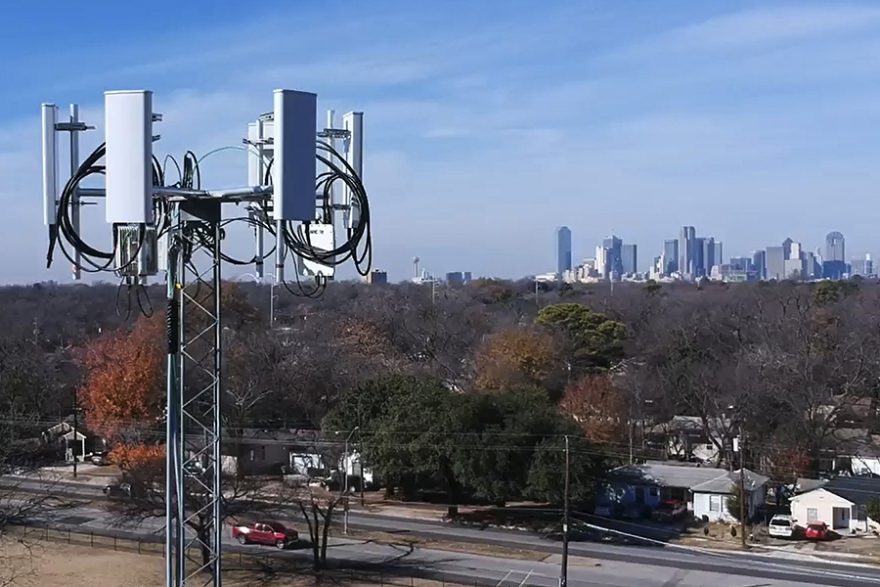Big Gaps Remain in Students’ Home Internet Access, Survey Reveals

When the pandemic forced schools to close last year, every student at Chagrin Falls Exempted Village Schools in Ohio already had a device, and most had access to the internet at home. As a result, the district’s director of technology, Mike Daugherty, was cautiously optimistic that they were well prepared for remote learning.
He quickly learned that having access to the internet and having the ability for an entire family to join hours-long video conferences were two different things. In many cases, when students’ connectivity fell short, Daugherty was left to urge families to upgrade their service.
While the country moves toward connecting more households to the internet than ever before, insufficient bandwidth remains a challenge for school districts and limits what tools students can use at home. A survey of 400 districts newly released by the Consortium for School Networking, or CoSN, underscores that basic access to the internet is not the barrier in many households – it’s an inability to use bandwidth-intensive content, such as video conferencing and streaming, that many districts would like to make a part of students’ lessons.
The survey of association members, who are district IT leaders, released last month found that 94 percent of districts faced challenges with videoconferencing during remote learning. For most of those districts (66 percent) the problems were caused by insufficient bandwidth. Respondents listed slow connections and multiple users as the top technical problems they faced.
“We saw that over and over again where a family was working from home due to COVID and they’re all on a generic, basic internet connection and nobody can get anything done,” Daugherty said. “That was such a struggle for us.”
Part of the problem is that the federally recommended broadband thresholds for households don’t meet the needs of remote learning, said CoSN CEO Keith Krueger. Families may have plenty of bandwidth to stream or download content, he said, but not enough to upload. And most households have two or more students, compounding the problem.
Inequities Persist
The experience has caused digital equity to rank as a top concern among districts’ IT leaders. Nearly all the survey respondents (97 percent) said concerns about quality of students’ home access increased. And the number of districts providing off-campus services doubled compared to the year before, reaching 95 percent.
Equity will certainly be on the minds of district leaders as they decide what educational technology to use moving forward, Krueger said.
“The good news is [bandwidth is] better in schools,” he said. Yet, “from a vendor perspective, they are going to have to think more inclusively.”
Inside school buildings, districts have made huge strides toward improving internet access. According to the survey, the majority of responding districts (61 percent) met the FCC’s long-term broadband goal, set in 2014. Three years ago, fewer than a third of districts met that standard, Krueger said.
Having students back in the building will help schools in the Chagrin school district, Daugherty said, especially since the district has a relatively small IT staff that isn’t equipped to provide home support.
Prior to the pandemic, Daugherty’s department fielded around five to 10 technical problems a day, mostly from students who broke or forgot their Chromebooks. During remote learning, that jumped to around 30 to 50 per day.
But home connectivity remains a concern because some practices from the pandemic will continue, Daugherty said.
He expects that his district will continue sending devices home with students over the summer break to lessen the summer academic slide. He also expects teachers to continue to record their lessons so students can access them later as needed.
Aside from equity concerns, district technology leaders listed improving cybersecurity and student data privacy as their top technology priorities.
According to the survey, more than three-quarters of districts (77 percent) do not have a full-time employee dedicated to network security. And only half of districts require cybersecurity training for the entire staff.
Other challenges IT leaders listed during the survey were:
- Budget constraints and lack of resources
- Lack of access to professional development
- Existence of silos in the district
“There has to be a passionate advocacy on the part of technology leaders to articulate what we can do better by making sure we have equity built in,” Krueger said. “Digital isn’t going away. There’s a whole lot of things we can do a lot better, even at school.”
Photo: Alpha Wireless AW3170 panel antennas deployed in a private school district network near the Dallas-Fort Worth metro area. (Credit: Business Wire via AP)
Follow EdWeek Market Brief on Twitter @EdMarketBrief or connect with us on LinkedIn.
See also:
